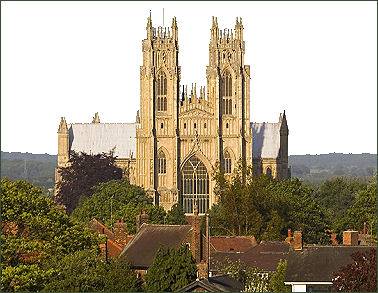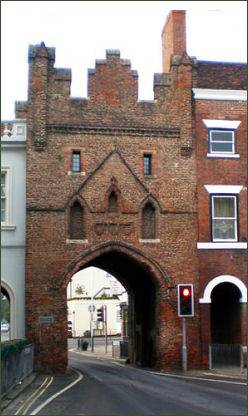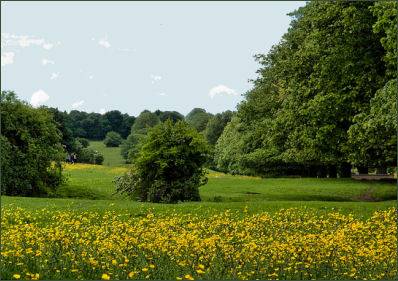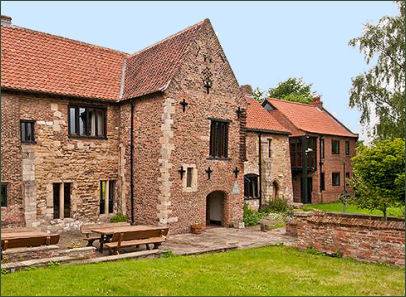Beverley
OS grid reference:-TA 035 399
 The charming market town of Beverley in the the East Riding of Yorkshire was originally known as Inderawuda meaning 'in the wood of the men of Deira' and was founded around the year 700 by Saint John of Beverley.
The charming market town of Beverley in the the East Riding of Yorkshire was originally known as Inderawuda meaning 'in the wood of the men of Deira' and was founded around the year 700 by Saint John of Beverley.
 The first structure built in the area was the church of St. John the Evangelist, which was established by the Bishop of York, later to became known to history as John of Beverley. He was believed to have performed miracles during his lifetime, and was later venerated as a saint.
The first structure built in the area was the church of St. John the Evangelist, which was established by the Bishop of York, later to became known to history as John of Beverley. He was believed to have performed miracles during his lifetime, and was later venerated as a saint.
In about the 850s the monastery which had been constructed on the site was abandoned; presumably due to the invasion of the Great Heathen Army of Vikings who established the Kingdom of Jorvík in the region. The Saxon King Athelstan visited Inderawuda prior to the famous Battle of Brunanburh, when he defeated the Vikings. He is recorded to have prayed all night and claimed he had a vision relating he would be victorious over his enemies and in return he helped the town to develop.
In the tenth century the town's name was changed to Bevreli or Beverlac, meaning beaver-lake or beaver-clearing; in reference to the colonies of beavers in the River Hull at the time. Beverley developed into one of the most important Christian centres of the North of England. The town became a noted place of religious pilgrimage throughout the Medieval era, due to its founder and it was eventually to grow into a propsperous wool-trading town.
Magnificent Beverley Minster, the parish church, is one of the largest and most beautiful parish churches in Britain, measuring 393 feet long, it is larger than many cathedrals. In the style of its architecture, with its soaring Gothic arches, Beverley Minster resembles York Minster. A distinctive feature of both the north and south transepts is the presence of rose windows, and a White Rose of York. The great sixteenth century east window still retains much of its original medieval stained glass, while the marble font dates back to the Norman era. As well as the magnificent minster, the East Beverley boasts the superb medieval Church of St Mary.
 In the early medieval period, Beverley had no town walls, however due to the unstable political situation during the reign of King Henry IV in the early fifteenth century, Beverley's defences were improved. North Bar (pictured above right) was rebuilt in brick between 1409 and 1410 and other gateways to the town repaired. However, these defences proved insufficient to prevent rebels entering the town in 1537. At the outbreak of civil war between Charles I and Parliament in the 1640's, the defences were strengthened with new ditches, the gatehouses repaired and a garrison protected the town. Despite this Royalist forces successfully raided Beverley. The only traces of theses defences to survive intact to the present day are the original ditches and the North Bar gate.
In the early medieval period, Beverley had no town walls, however due to the unstable political situation during the reign of King Henry IV in the early fifteenth century, Beverley's defences were improved. North Bar (pictured above right) was rebuilt in brick between 1409 and 1410 and other gateways to the town repaired. However, these defences proved insufficient to prevent rebels entering the town in 1537. At the outbreak of civil war between Charles I and Parliament in the 1640's, the defences were strengthened with new ditches, the gatehouses repaired and a garrison protected the town. Despite this Royalist forces successfully raided Beverley. The only traces of theses defences to survive intact to the present day are the original ditches and the North Bar gate.
Beverley is home to a bustling market, a thriving music scene, excellent flat racing and a medieval skyline that remains unspoilt. The town boasts characterful cobbled streets and quaint courtyards, and elegant Georgian and Victorian terraces. There are many high street shops and is an interesting selection of smaller independent shops, an antique arcade and the Saturday market. The town centre is bordered by pavement cafes and coffee shops.
Beverley Racecourse is a thriving country racecourse which holds numerous meets through the season and is one of Yorkshire's leading racecourses. Beverley Westwood (above left) is one of the few common pastureland to remain in the country and is open to both residents and visitors.
Beverley Friary
 Beverley Friary, also known as The Old Friary, is a 600 year old Dominican Friary which was referred to by the medieval author Geoffrey Chaucer in his famous Canterbury Tales.
Beverley Friary, also known as The Old Friary, is a 600 year old Dominican Friary which was referred to by the medieval author Geoffrey Chaucer in his famous Canterbury Tales.
A Dominican friary was first established in the town in around 1240. The Dominican order were granted land near to Beverley Minster by the Archbishop of York. In 1263 King Henry III granted the monks the wood from 15 oak trees in the Forest of Gailtres. The friary was extended in the early fourteenth century. The interior of the building contains wall paintings from both the medieval and Tudor periods. A fifteenth century gateway, which stands in the friary's front garden was moved here from another location.
The friary was suppressed during King Henry VIII's Dissolution of the Monasteries in 1539. Many of the buildings were demolished and the material used elsewhere. The guesthouse is thought to have escaped demolition because it was not being used directly for religious purposes. During the centuries which followed the building saw many uses.
Since 1984 it has served as a YHA Youth Hostel and occasionally an exhibition venue and is located a short distance from Beverley Minster.
Yorkshire Churches, Abbeys and Priories
Towns and Villages of Yorkshire
